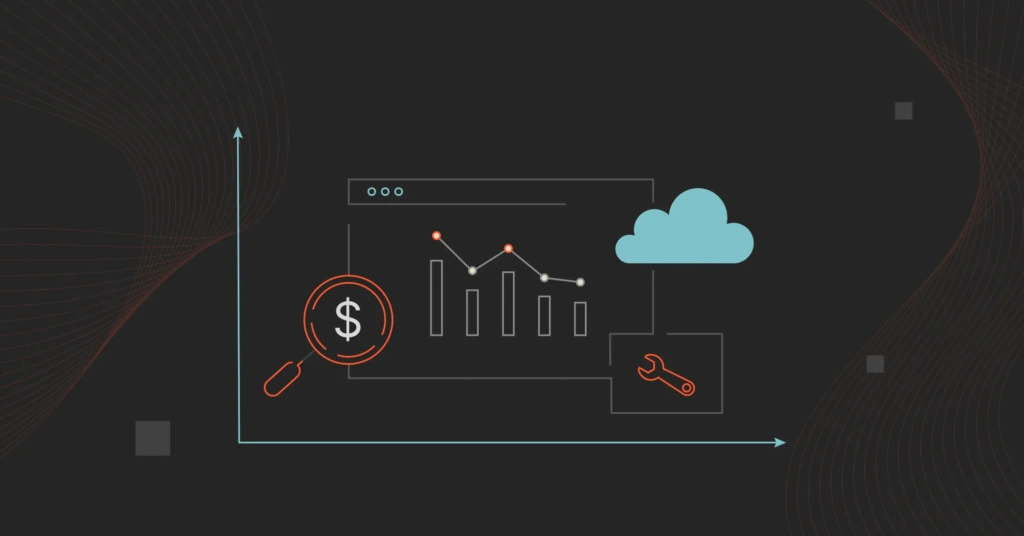Over the last few years, more organizations have switched from relying solely on one cloud service provider (CSP) to several. The primary reasons for the change are minimizing dependence on a single CSP, preventing vendor lock-in, and providing greater flexibility.
Recent trends include using a mix of cloud providers to take advantage of the cost savings several CSPs offer and using best-of-breed services for different applications, teams, or departments.
Yet managing multi-cloud deployments has been the biggest challenge. The following guide shares the best multi-cloud management tools you can use right now.
Not so fast, though. Let’s start at the beginning.
Multi-Cloud Definition: What Is A Multi-Cloud Approach?
Multi-cloud computing refers to using two or more public cloud services from at least two public clouds for different purposes within an organization.
As an example, you might use one public cloud for authentication, another for Exchange servers, and another as a database.
Most multi-cloud infrastructure users are enterprises because they have multiple use cases that can leverage multiple public cloud providers.

One more thing. A multi-cloud approach differs from a hybrid cloud strategy –- although the two terms often appear interchangeably.
What is the difference between multi-cloud and hybrid cloud computing?
A multi-cloud strategy involves using multiple public clouds. In contrast, a hybrid cloud strategy consists in using multiple public clouds and your company’s own data center (on-premises or private).
The on-premises infrastructure may be an in-house data center or any other IT infrastructure operating within its corporate network.
A hybrid cloud infrastructure ensures some applications, workloads, or processes remain on-premises or in a private cloud with controlled access. A multi-cloud strategy is best for organizations looking to maximize the benefits of public clouds (more about that in a moment).
The State Of Multi-Cloud Adoption In 2024
Here are some interesting insights about multi-cloud adoption:
- 97% of organizations use at least two cloud providers (2022 S&P Global Multicloud survey)
- 90% say their multi-cloud strategy is already helping speed up or achieve their organization’s business goals — up from 53% in 2021 (HashiCorp State of Cloud Strategy Survey 2022)
- 82% of organizations say they already leverage a multi-cloud approach, and 78% are running workloads in at least three public clouds
- 79% of the respondents believe applications will move freely across clouds at some point (IBM 2022 State of Multicloud Report). They said the primary driver would be to ensure high availability (33%), to leverage different services and applications (25%), and to minimize costs (21%)
- IBM’s survey suggests that more organizations are migrating workloads from private clouds to public clouds. Another group is moving from on-prem to SaaS solutions.
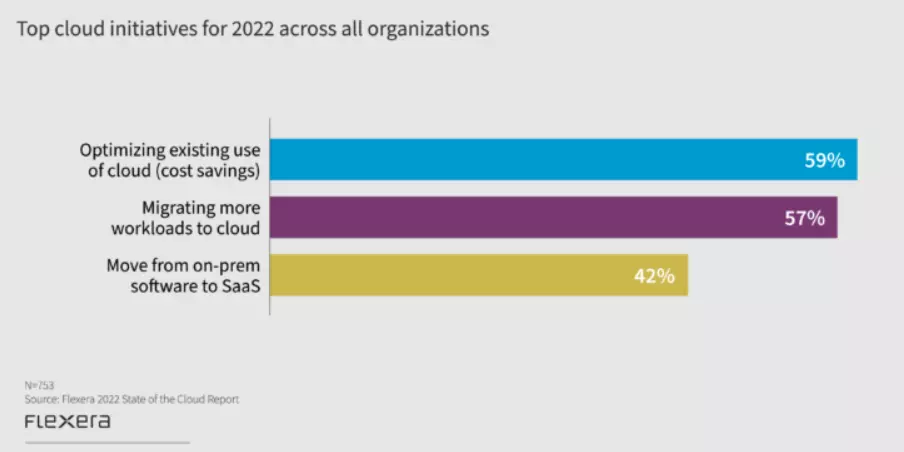
State of the Cloud Report – Flexera
That makes sense. Compared to building your own cloud infrastructure, SaaS allows you to deploy, run, and move data faster (hopefully, cost-effectively). That’s not all.
What are the benefits of a multi-cloud approach?
Multi-cloud infrastructure can be beneficial for several reasons, including to:
- Achieve best-of-breed outcomes for different requirements. AWS for its variety and cost flexibility, Microsoft Azure for its compatibility with Windows solutions already deployed in enterprises, or Google Cloud for Machine Learning and Kubernetes.
- Use more of the most affordable provider’s services to reduce costs.
- Increase flexibility, including switching providers during outages.
- Avoid vendor lock-in.
- Limit dependence on a single provider.
- Take advantage of the latest cloud offerings from a variety of providers at the same time.
Now picture this:
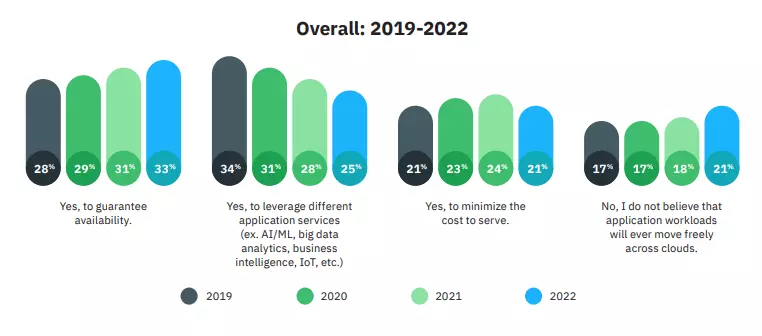
This image from the IBM survey shows how opinion has shifted about the primary driver of multi-cloud deployments. For example, more respondents believe multi-cloud infrastructure is ideal for ensuring high availability but less for leveraging different application services.
That’s because implementing a multi-cloud strategy can be challenging.
What are the challenges of implementing a multi-cloud strategy?
Multi-cloud deployments are generally more complex than other strategies. The following challenges make implementing a multi-cloud strategy challenging:
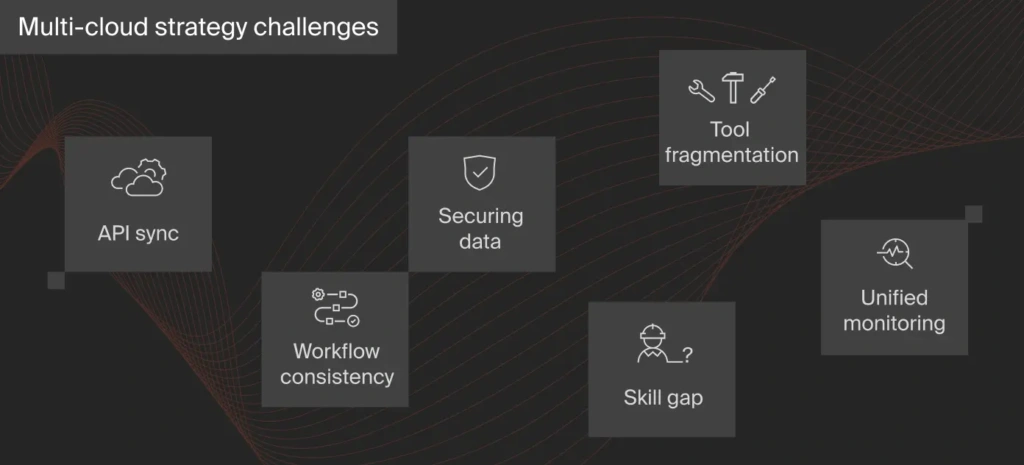
- Finding people with the skills for your particular multi-cloud deployment can be difficult, so you may need to train them yourself.
- Because cloud providers’ APIs differ, synchronizing workloads across multiple clouds can be challenging.
- It can be challenging to secure data and workloads across different clouds.
- Each cloud may require you to manage a different tool for the same job.
- Each cloud may require a different workflow, which can slow down productivity.
- Visualizing and monitoring everything in one place can be challenging without a robust multi-cloud management tool.
So, how does multi-cloud management work, and what can you expect from it?
What Does a Multi-Cloud Management Tool Do?
Multi-cloud management is the process of monitoring, securing, and optimizing workloads and applications across multiple public clouds. A multi-cloud management tool provides a unified platform for monitoring, securing, and optimizing cross-cloud deployments.
Many cloud management tools are great for managing a single cloud, but there are several cross-cloud management platforms available today.
So how do you know which tool is best for your organizational needs?
Necessities When Choosing a Multi-Cloud Management Tool
Consider the following:
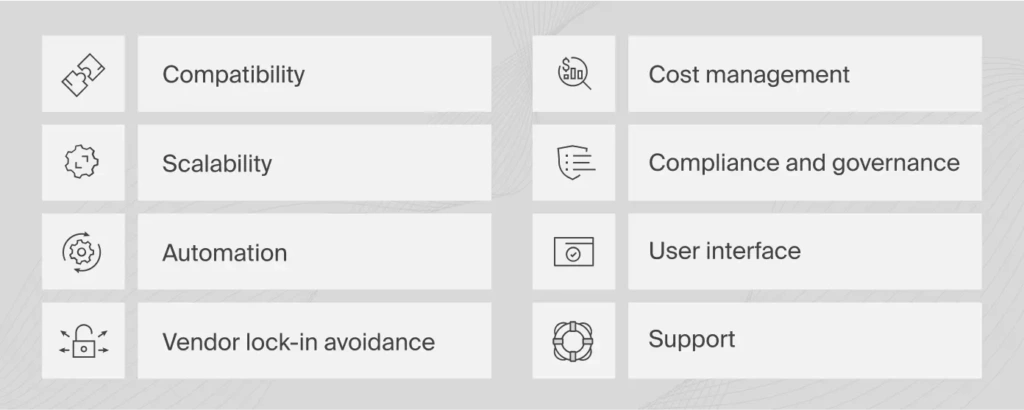
- Compatibility. Ensure the tool supports all cloud platforms you use. It should integrate well with your existing systems and third-party applications.
- Scalability. As your organization grows, the platform should scale up to support increasing cloud resources and services.
- Automation. The tool should automate routine tasks such as backups, scaling, and updates. This reduces manual effort and increases efficiency.
- Vendor lock-in avoidance. Ensure the platform doesn’t lock you into specific vendors, allowing flexibility in switching providers.
- Cost management. The tool should help you track and control costs across all cloud environments. Look for platforms that offer cost anomaly detection, budgeting and forecasting, cost allocation, and multi-cloud visibility.
- Compliance and governance. The platform should help you comply with relevant regulations and offer governance tools to manage access and usage policies.
- User interface. Choose a tool with an intuitive interface. It should be easy to navigate, minimizing the learning curve for your team.
- Support. Opt for a tool that offers reliable customer support. Timely help can prevent downtime and other critical issues.
You can use these platforms to improve cross-cloud visibility and reduce the number of tools you need to monitor and optimize your multi-cloud deployment.
13 Multi-Cloud Management Tools To Consider Today
Here they are with a quick overview of their work, which covers multi-cloud cost monitoring to infrastructure and application performance management.
1. CloudZero AnyCost – Multi-cloud cost intelligence platform
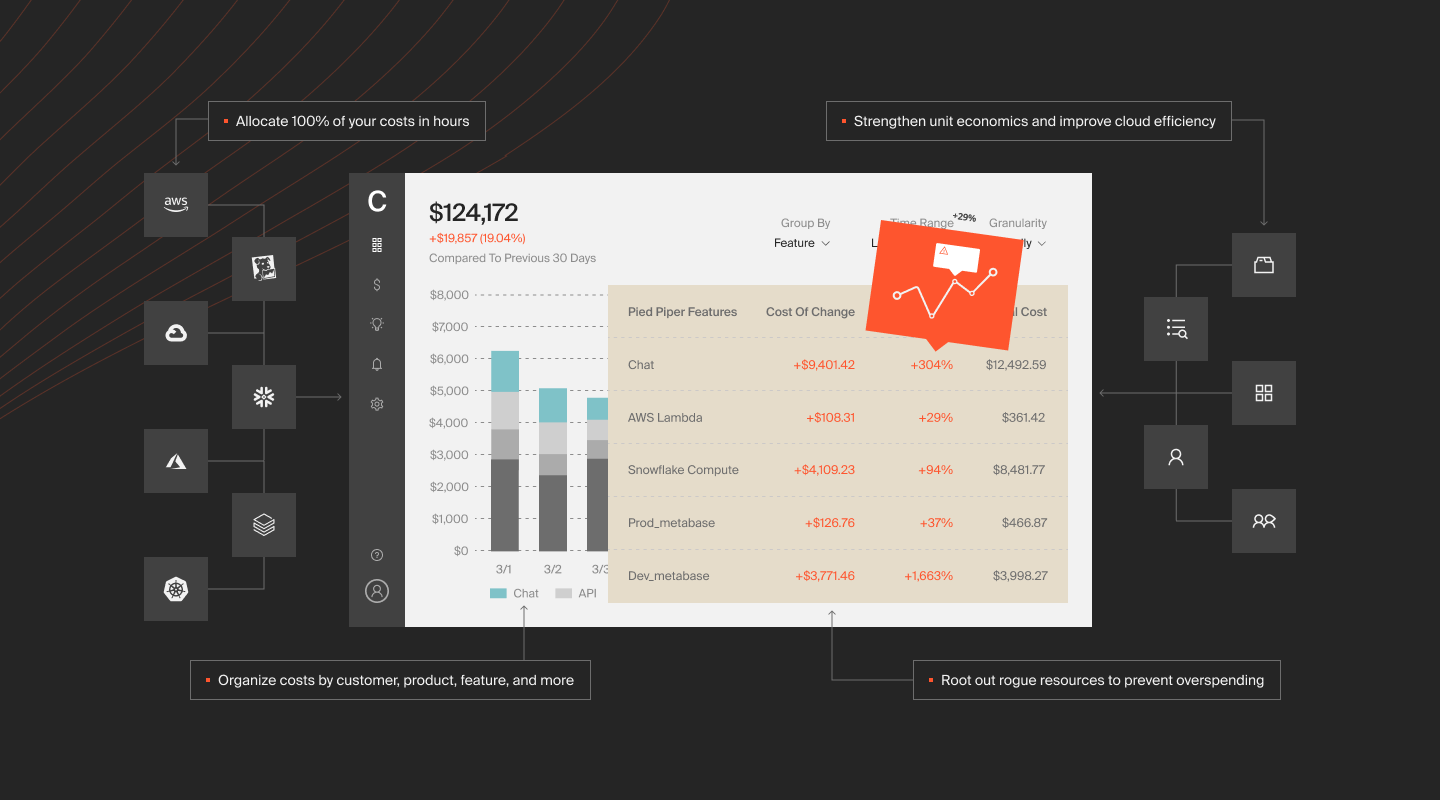
CloudZero AnyCost ingests, normalizes, and presents cost intelligence from cloud providers like AWS, Azure, GCP, and Kubernetes, as well as software platforms like Snowflake, New Relic, MongoDB, and Databricks.
No cost allocation tags are required. CloudZero will correlate costs and help you get a complete picture of the cost to build and run your products — from tagged, untagged, untaggable, and multi-tenant resources.
CloudZero is extra special because you can view your multi-cloud costs to an individual customer, product, software feature, team, environment, and more.
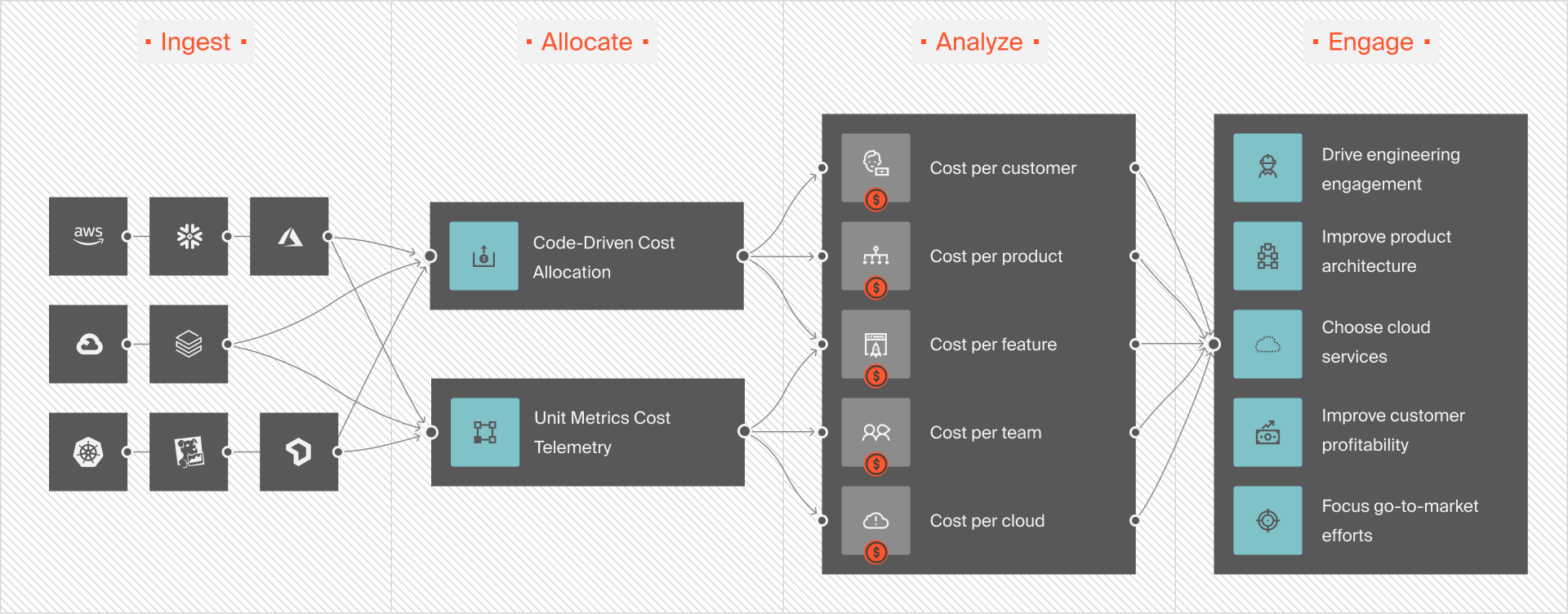
By speaking the same cost language, your finance, engineering, and FinOps teams can pinpoint precisely where to cut costs or invest more to maximize returns.
For example, by analyzing the costs of supporting a particular customer, you can decide how to price your services at renewal to protect your margins.
Or, you can discover cost centers you could do without. Drift used CloudZero to do just that, reducing their annual AWS spend by $2.4 million. You can, too.
2. LaceWork – Multi-cloud security platform
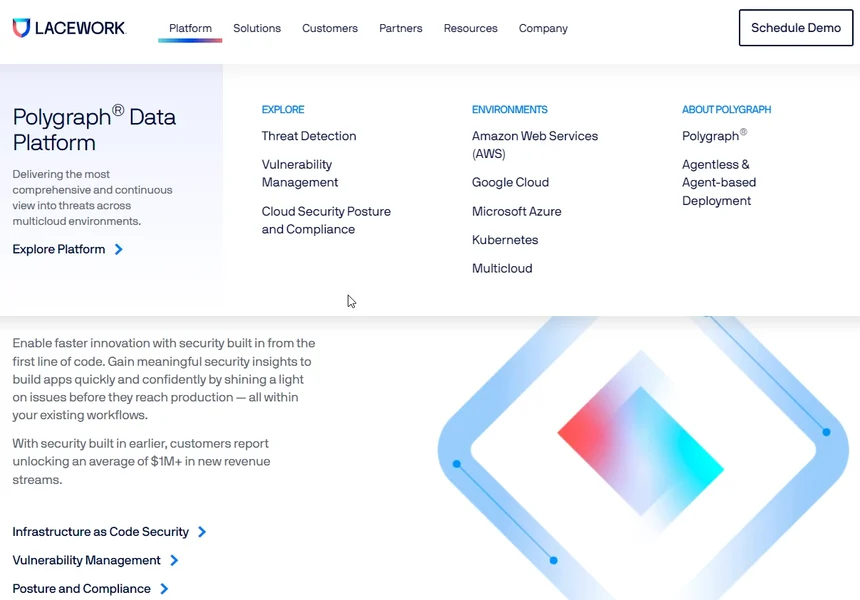
LaceWork manages threats and secures your accounts across Amazon Web Services (AWS), Microsoft Azure, and Google Cloud (GCP) in one exceptional platform.
You can also use it to secure your Kubernetes and hybrid cloud (private, on-prem, and public cloud combo) environments. Whether you choose an agentless or agent-based deployment, Lacework continuously collects, monitors, and enables you to act on application, user, process, network behavior, vulnerabilities, and configurations.
3. Terraform – Multi-cloud deployment platform
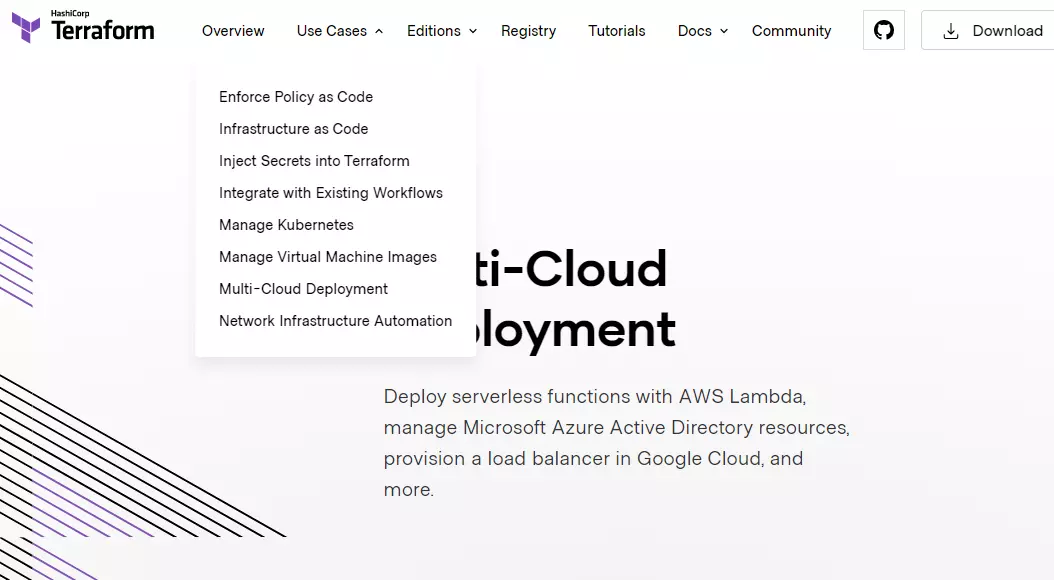
Terraform helps you leverage the same workflow to coordinate multiple providers and manage cross-cloud dependencies efficiently. You can use a single workflow to govern, provision, secure, and audit any infrastructure.
This simplifies orchestration and compliance management for your multi-cloud infrastructures at scale, reduces risks, minimizes management effort and costs, and improves productivity.
By composing features from more than 200 providers, Terraform enables you to use best-of-breed features using logical topology.
4. RedHat Ansible – Open-source multi-cloud platform

If you are looking to build a custom multi-cloud management tool, Ansible can help. You can use Ansible to ensure your cross-cloud infrastructure components work together to satisfy your use case requirements, whether you use only servers or servers, virtual private networks, specific OS configurations, load balancers, and subnets in your application environment.
Ansible aims to eliminate the guesswork involved in multi-cloud and hybrid cloud deployments. You can also automate your environments with policies rather than training entire teams on how to work with each cloud vendor in your setup.
5. Cloudify – Environment-as-a-Service platform
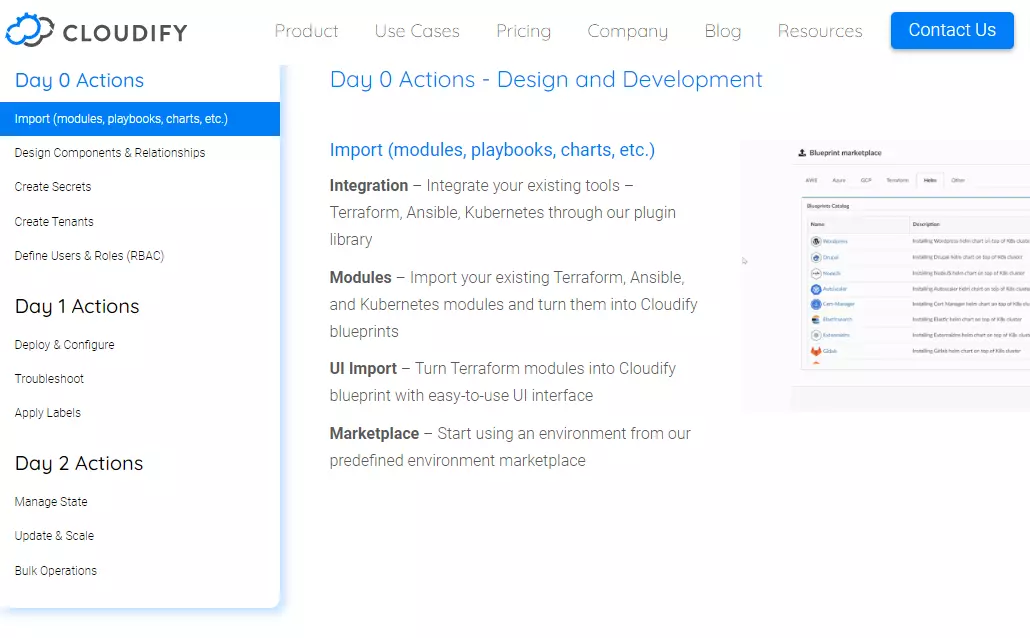
Cloudify acts as middleware for users to deploy applications or services in cloud computing environments. With its open-source cloud orchestration tool, you can run applications across multiple clouds and data centers — with a single click — for premium multi-cloud, hybrid cloud, and infrastructure management.
Cloudify helps you design and streamline your app’s entire lifecycle. This includes deploying to different cloud environments or data centers, managing the deployed application, detecting failures, and performing continuous maintenance.
Cloudify is ideal for users wanting to launch pre-built applications in multiple clouds without dabbling in much technical detail.
6. Morpheus – No-code multi-cloud management tool
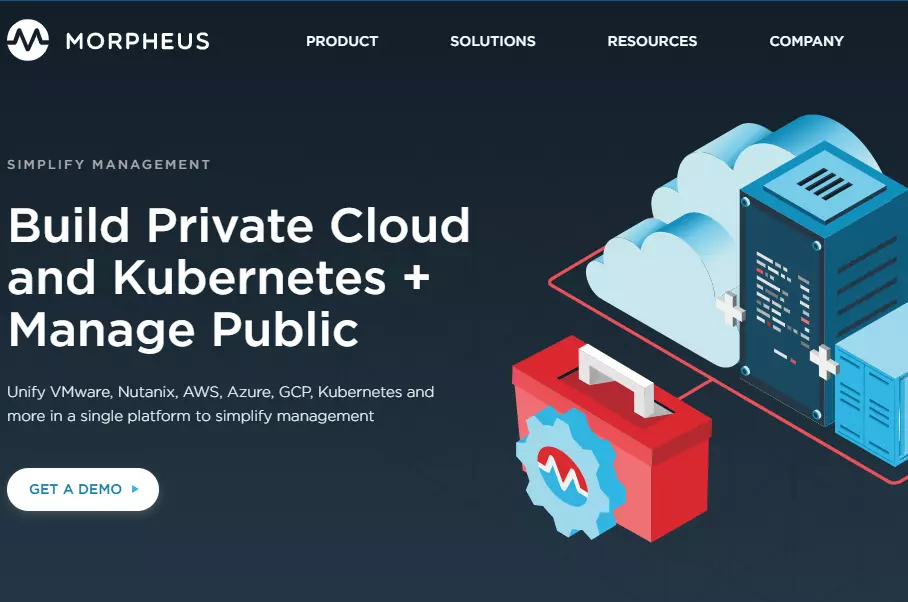
Morpheus helps you take advantage of AWS, Microsoft Azure, and GCP cloud-native services. Morpheus also simplifies the provisioning of VMs, bare metal, containers (IaaS/CaaS) andfull application stacks (PaaS) using virtually any public cloud.
That includes Kubernetes, VMware, HPE OneView, OpenStack, and Cisco UCS, without requiring your IT teams to learn each public cloud in your toolset.
The platform enables you to expose cloud-native PaaS, IaaS, Kubernetes, and infrastructure-as-code (IaC) blueprints using a unified API and console. You can then use a single public cloud account that everyone can access. Morpheus then manages governance and reporting.
7. IBM MCMP – Multi-cloud management platform
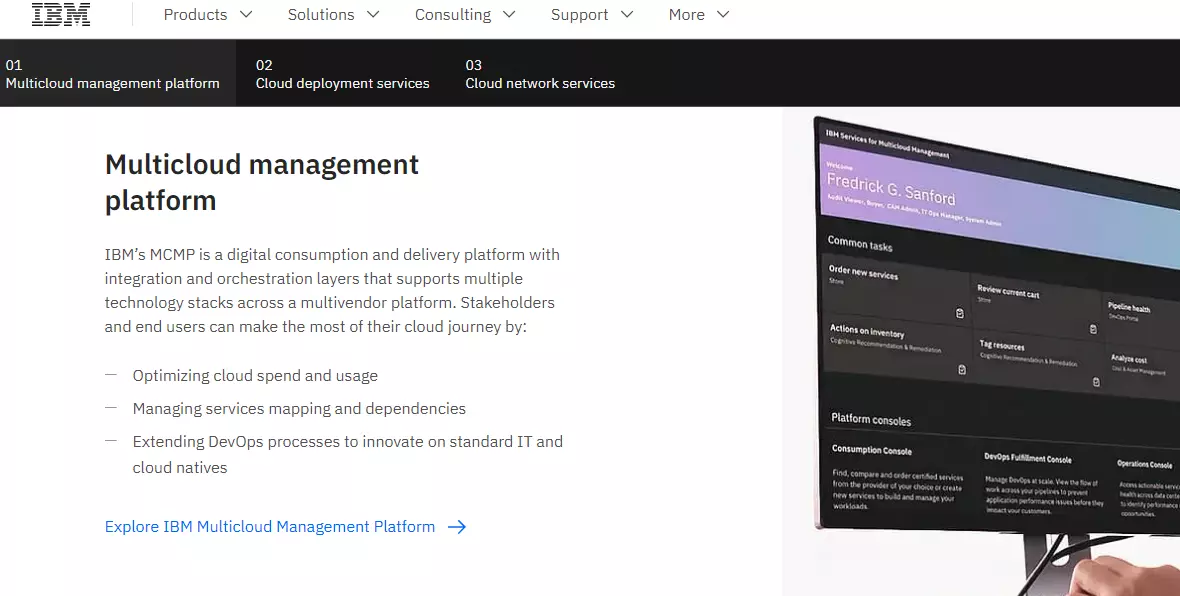
IBM’s MCMP supports both multi-cloud and hybrid-cloud deployments. The IBM Multicloud Manager supports app-centric management (health, policy, deployments, and operations). Besides providing visibility across clouds and clusters, it also delivers policy-based compliance management.
MCMP also includes management for your Kubernetes clusters (containers and microservices).
8. Dynatrace – Full-stack observability platform
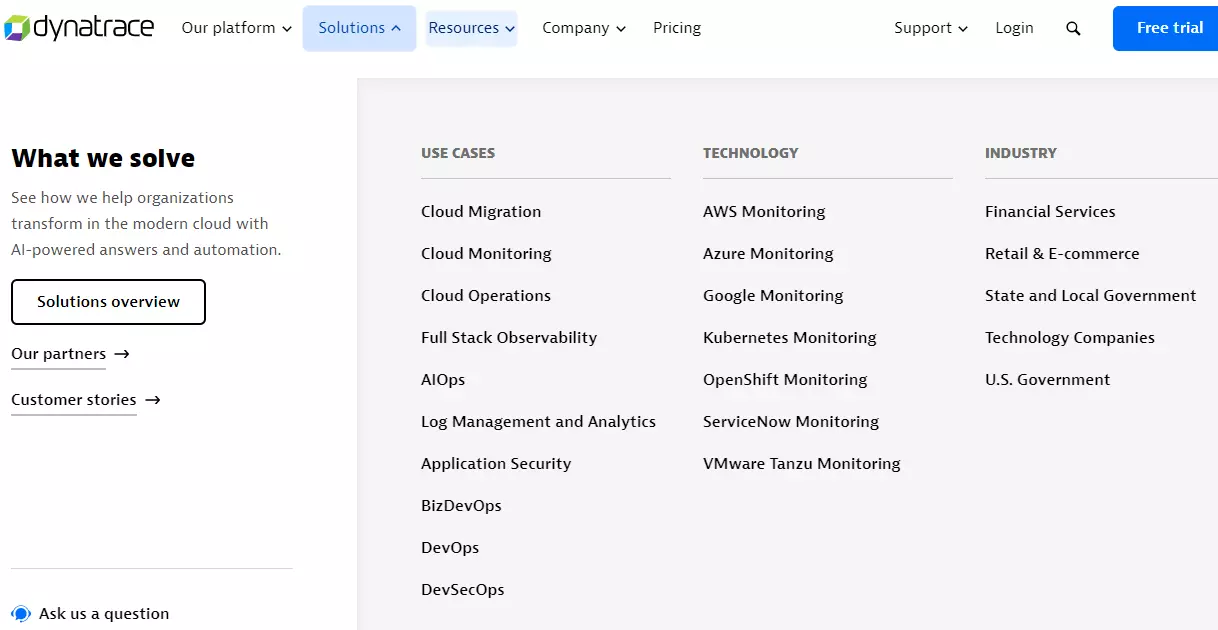
The Dynatrace solution enables you to pull, correlate, and monitor data from different public, private, or hybrid clouds. It covers most public clouds, including AWS, Azure, and GCP, as well as popular platforms, such as RedHat (OpenStack and OpenShift), VMware Tanzu, SAP Business Technology Platform, and the IBM Cloud Foundry.
The service automatically detects, collects, and analyzes metadata, revealing the interrelationships among all your system components and the dependencies between apps and services.
9. Nutanix Cloud Manager – Hybrid multi-cloud platform
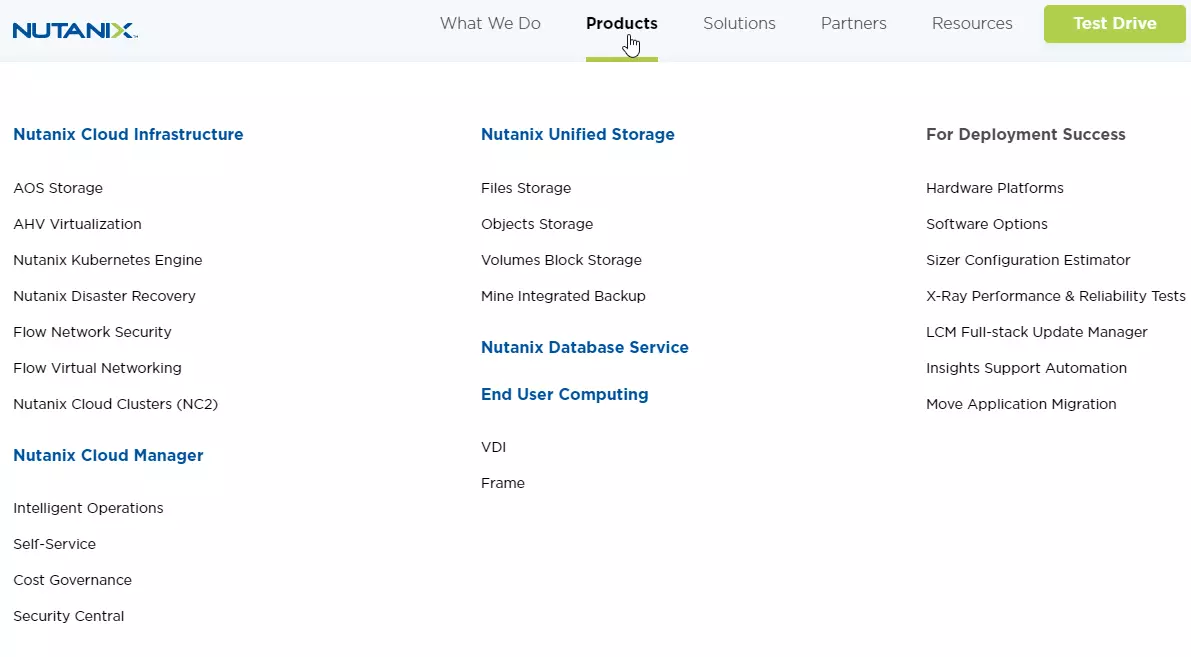
Nutanix’s Cloud Platform combines hybrid cloud infrastructure with multi-cloud management and unified storage, desktop, database, and desktop services. The goal is to support any application and workload wherever it is deployed—in private, public, hybrid, or multi-cloud deployments.
Expect a unified, self-service cloud control plane that delivers AI-powered app automation and cost and security governance.
10. CloudBolt – Multi-cloud and hypervisor management platform
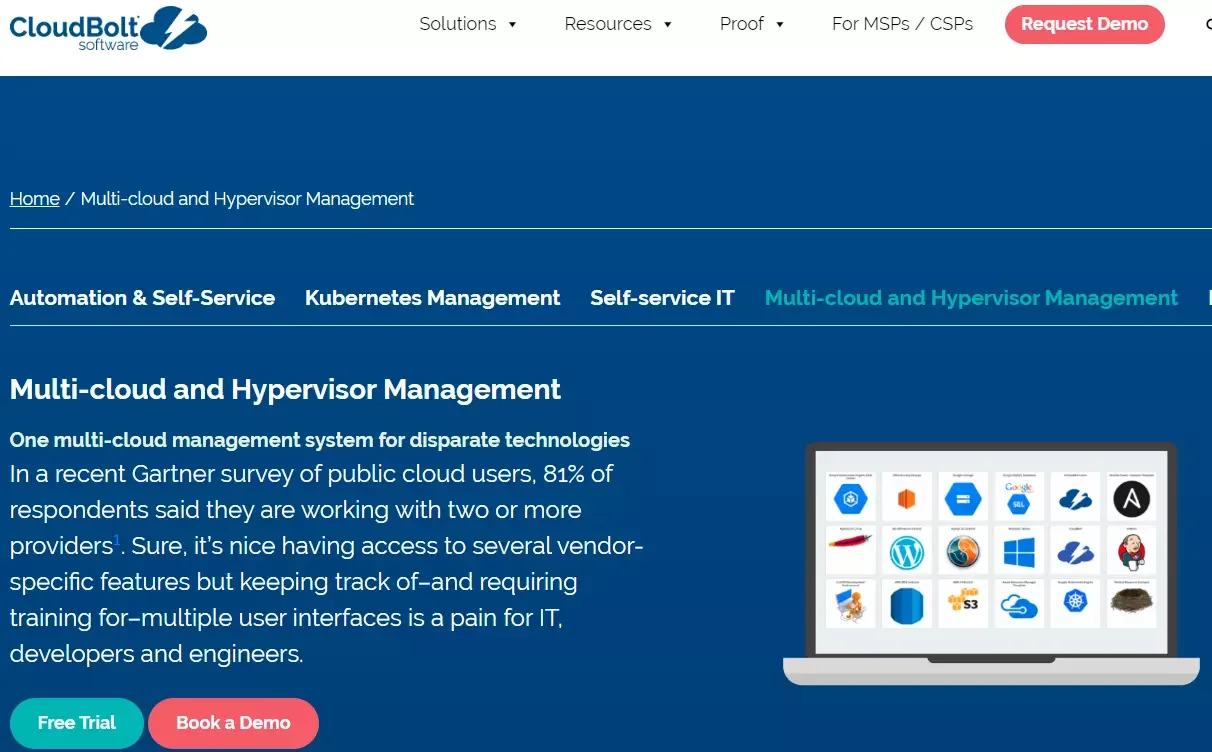
CloudBolt works as a multi-cloud management abstraction layer. It enables you to use different solutions within one catalog. To deliver this, CloudBolt comes with a pluggable architecture, allowing you to support new technologies as required. You can integrate more than 20 resource handlers, including Hyper-V, vCenter, AWS, Azure, Google Cloud Platform, IBM Cloud, and SCVMM, in the catalog, which eases provisioning and orchestration.
11. Scalr – Cloud provider configuration platform
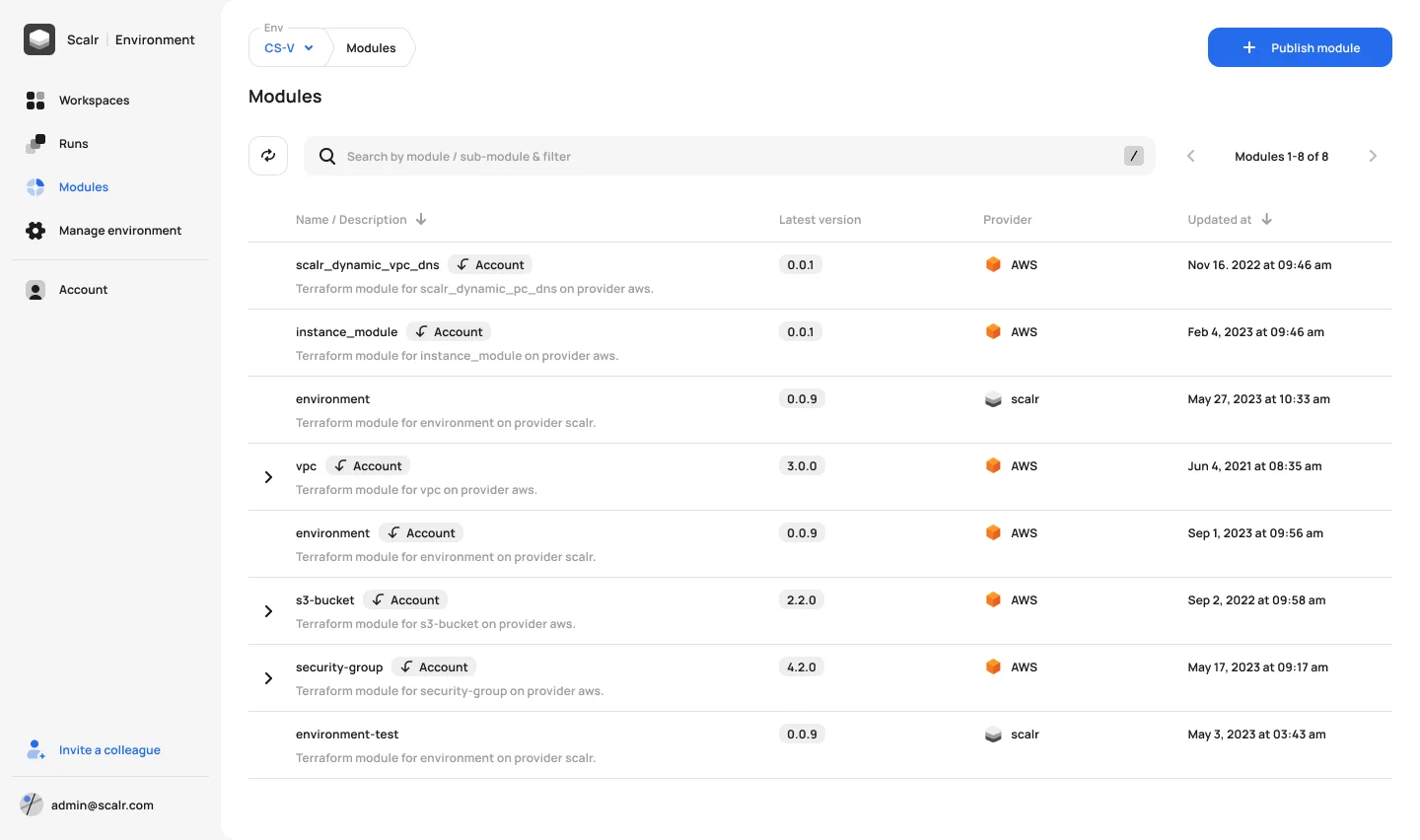
Scalr is a cloud management platform that acts as a backend for Terraform and OpenTofu (OTF). It supports remote operations by executing runs and centrally storing state data, enabling collaboration across organizations.
Scalr manages multi-cloud environments securely by authenticating with various cloud providers. It helps users manage credentials in one place, eliminating the need for hardcoded configurations. This approach ensures secure access management and maintains compliance with organizational policies.
12. BMC Multi-Cloud Management – Multi-cloud migration

BMC Multi-Cloud Management helps businesses create detailed migration plans across multiple cloud providers. This ensures they understand what to migrate, the potential costs, and how to secure their data during the transition.
BMC also automates various tasks to reduce errors and downtime. The platform’s governance features maintain ongoing security and compliance, making it easier for businesses to manage their resources post-migration. This approach reduces complexity and improves control during multi-cloud migrations.
13. Zerto – Multi-cloud disaster recovery and backup platform

Zerto supports disaster recovery and backup across multi-cloud environments. It integrates with AWS, Azure, GCP, IBM Cloud, Oracle Cloud and more than 350 managed service providers to allow businesses to replicate, recover, and migrate data effectively.
Zerto’s software-only approach eliminates the need for traditional backup windows or snapshots, making it a reliable tool for managing multi-cloud workloads. Its features ensure high availability and resilience, which is crucial for organizations in complex, multi-cloud environments.
What’s Next: Untangle Your Multi-Cloud Costs With CloudZero
CloudZero’s cloud cost intelligence platform empowers you to transform telemetry into granular and actionable cost insights. You can then answer any cost question, drill down, zoom out, and get the most granular, context-rich intelligence out there — all without endless tagging.
You can get a full picture of your cost of goods sold (COGS), unit economics, and even the cost of supporting a specific customer — all within a single platform. CloudZero AnyCost has you covered across Azure, AWS, and GCP public clouds — and even platforms like K8s, Snowflake, and Databricks.
Schedule a demo today to see CloudZero in action.

